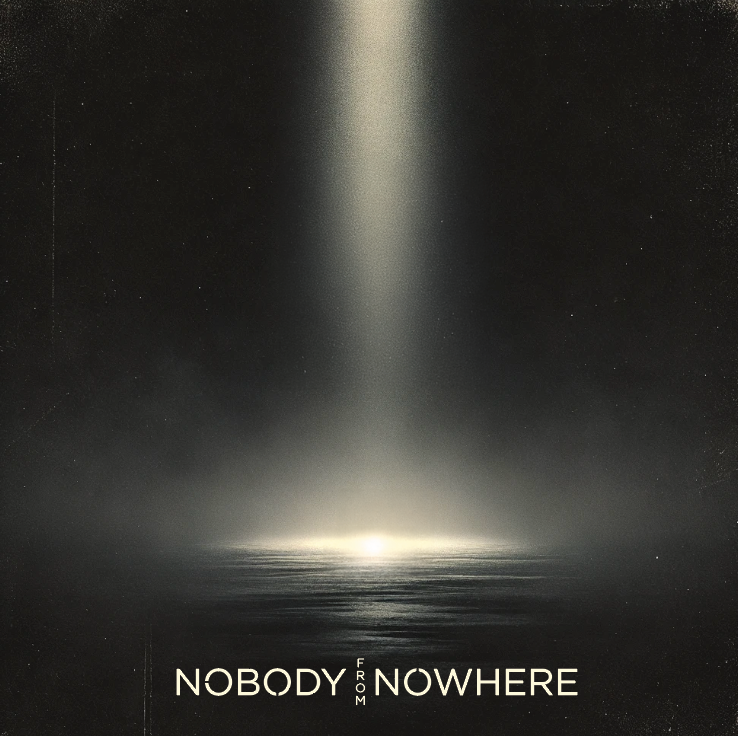Music Review: Nobody from Nowhere’s Self-Titled Album
Experienced producer and songwriter Michael Koppelman’s new project is the culmination of finely honed skill and talent.
Nobody From Nowhere album artwork.
There’s a sense of contentment listening to an album where everything is in its rightful place. Nobody from Nowhere’s self-titled debut record, released in June 2025, is exactly that, serving up a chef’s kiss of audio excellence and creating an immediate trust between listener and creator from the very first notes.
That’s no surprise: Nobody From Nowhere is the latest project from Michael Koppelman, who brings years of wide-ranging experience to the musical table, having produced records by Minnesota legend Prince (as well as a who’s who of other international and Minneapolis-based artists). Many of this album’s contributors are seasoned musicians who were also a part of Koppelman’s ’90s art-rock outfit raintribe.
Koppelman not only wrote the songs on Nobody From Nowhere (with one cowrite credit belonging to the illustrious Ted Hajnasiewicz on the track “Time’s Money” and another on “Crawl In Love With Me” going to Blair Sherman) but produced and mixed the album as well.
His production genius and ear for detail are on full display with Nobody From Nowhere. The clearest examples of his mixing chops are Marc Retish’s drum tracks. It’s difficult to mix drums to a point where they find their rightful place, and sound as if they truly belong in a musical landscape, but Koppelman nails it. The snare is prominent on this album, guiding each track, while the kick provides subtle momentum, a low-frequency pulse that the arrangements build from.
Electric guitar phenom Louis Tessman Stanoch could easily fill albums with his virtuosic playing. Many producers and mixers would be tempted to push the faders on Stanoch’s guitar tracks all the way to the top, letting the sweet electric tone and Hendrix-esque motion lead the songs. Koppelman’s mixes ensure that the song itself is the main feature, and his restraint shows hard-earned wisdom that rewards the listener as they move through this beauty of an album.
Koppelman selected an array of amazing vocal talent to help tell his story—Nikki Lemire, Jill Conzemius, Ted Hajnasiewicz, Anastazia Acker, Kurt Koppelman, and Koppelman himself—and his skill shines even more in his vocal production and mix work.
On “Crawl In Love With Me,” the voice track has a textured low vocal mirror that enhances the low to high range of the track starting with the first verse, giving the song incredible depth. When the chorus kicks in, Koppelman evolves the vocals into a call and response where the call still has that gritty edge, while the response vocal is cleaner and lighter. Koppelman also drops everything except the drums and electric guitar after the first chorus, highlighting the lush production of the rest of the song.
On the track “I Love You & Goodbye,” Anastasia Acker’s vocal tone is simple, straightforward, soft, and lovely. On certain lines and words, a delay and reverb throws her voice out only to boomerang it right back on itself, drawing a richness out of Acker’s voice that is simply revelatory. For listeners who crave contrast and innovation, Koppelman delivers both and more.
There’s a steady hand on the wheel, born of experience, in this album, from the short lyric lines that leave delightful spaces for Tessman Stanoch and keyboardist Oliver Osland (both of Burning Blue Rain) to fill, to the patient unwinding of each song story. Conzemius and Acker, in particular, excel at making the listener wait for the end of each phrase, which gives lyrics added weight. Osland’s keyboard work ranges from sounding like the dulled edge of a saw blade, as on the track “Set Me Free,” to soft synthy piano on the track “I Love You & Goodbye.” His tone on “Set Me Free” releases an edge in Lemire’s voice, and the keys on “I Love You & Goodbye” emphasize an innocence in Acker’s vocals.
“I Love You & Goodbye” is the standout song for this reviewer. Acker’s wide-eyed delivery and the track’s subtle production combine to make the “goodbye” part of the song hit even harder. Osland’s keyboard work is delightfully simple and profound. Even the melody lines are short and resolve quickly. Tessman Stanoch’s slide guitar work and tone provide impeccable contrast to the softness that suffuses all the other aspects of this song.
The song evolves when Koppelman’s doubled, hard-panned right/left voice emerges near the end of the song to posit a counter melody that feels anthemic. The lyric suggests alternate endings to the “goodbye” that Acker sings, presenting heartwrenching moments of (likely misplaced) hope: “Someday, you might come back to me / Someday, I might get over you …” It’s an endearing set of lines, nostalgic for love’s first, honey-simple stage while laying bare a tension between that time and “see(ing) this look a thousand times.” Koppelman finds buried treasure in these depths.
Nobody From Nowhere. Photo credit: Katy Tessman.
The album began with the track “The 1st Time,” an appropriate greeting for listeners, and the songs, one by one, add a depth to the story of the album. By the time we reach the penultimate song “The End,” told from the perspective of the Grim Reaper, Koppelman’s self-assured storytelling has been made clear:
let nothing surprise you
I’m just here to show you the way
The vastly experienced and skilled team that came together on Nobody From Nowhere’s self-titled album have built a thing of delight, deep beauty, and awe. Michael Koppelman has emerged once again to guide a new generation of listeners to joy—and to show aspiring artists and producers how it’s done.
ABOUT THE AUTHOR
Doyle Turner. Photo credit: no_aesthetic_stills.
Doyle Turner loves words. Whether it is shaping syllables into songs, poems, early morning journals, handwritten thank yous, lists, or album reviews, he is in a deep and abiding relationship with his college-ruled paper, Uniball Signo 207 .7mm pens, and mostly his keyboard. A good day is spent taking pictures, mailing things, making the words convey the precise meaning, driving, and singing.


